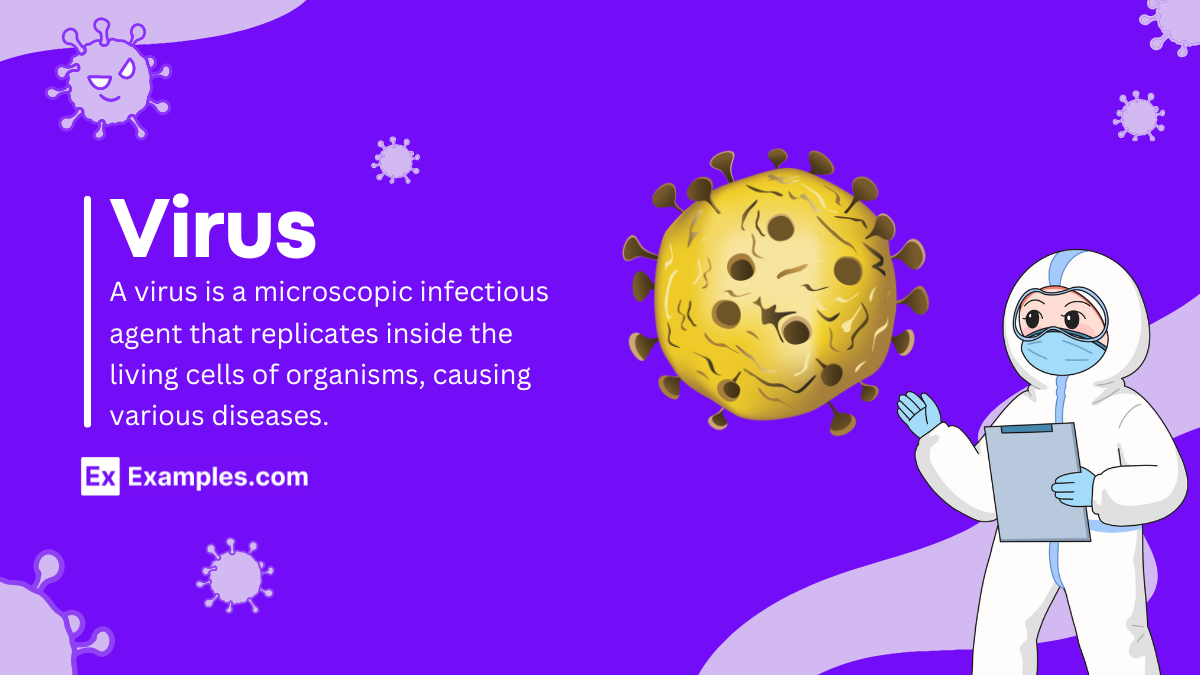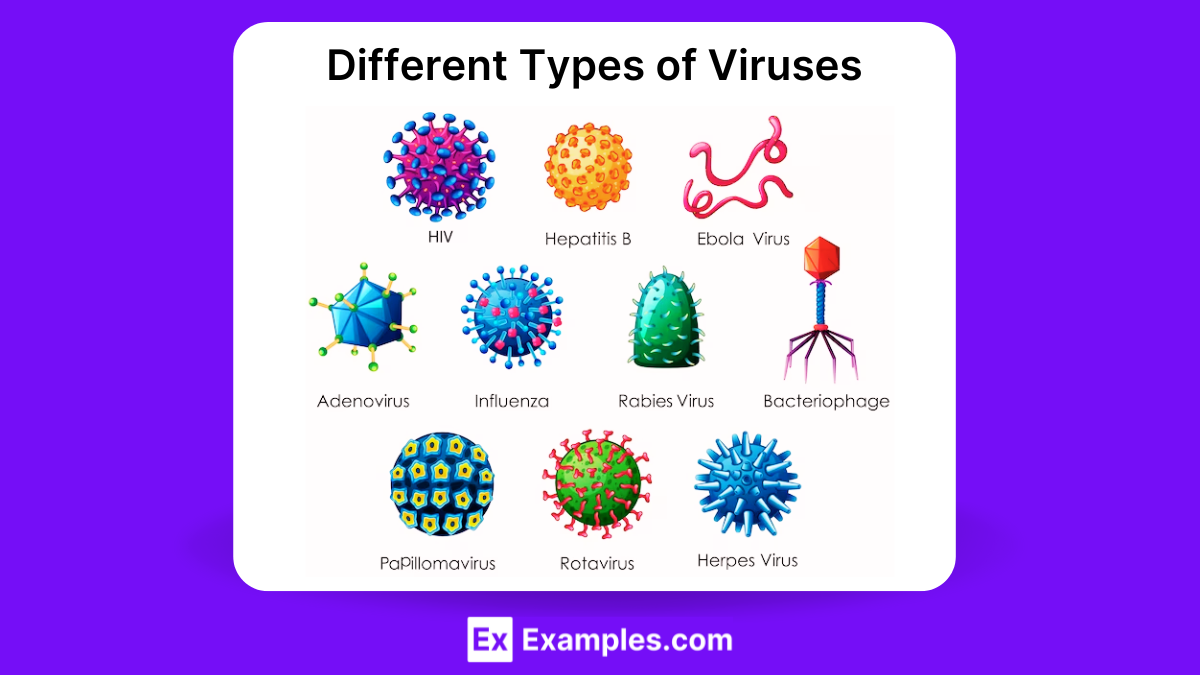What is the main component of a virus's genetic material?
Protein
Lipid
Nucleic acid
Carbohydrate


Viruses are microscopic agents of infection, capable of infecting living organisms from animals and plants to bacteria and archaea. They consist of genetic material, either DNA or RNA, encased in a protein coat. Unlike living cells, viruses cannot reproduce on their own. They hijack the cellular machinery of their host to replicate, often causing diseases. Despite their simplicity, viruses exhibit remarkable diversity and adaptability, posing significant challenges and opportunities in the fields of medicine and biotechnology. Understanding viruses is crucial for developing vaccines, antiviral drugs, and effective public health strategies.
A virus is a microscopic infectious agent that requires a living host cell to replicate. It consists of genetic material, either DNA or RNA, encased in a protein coat called a capsid. Some viruses also have an outer lipid envelope. Unlike living organisms, viruses cannot carry out metabolic processes or reproduce independently. They invade host cells and use the host’s cellular machinery to produce new virus particles, often causing diseases in the process. Viruses can infect all forms of life, including animals, plants, fungi, and bacteria.
Viruses are simple yet diverse entities with unique structures that enable them to infect host cells and replicate. The basic structure of a virus includes several key components:
Viruses are unique infectious agents that require a host cell to replicate. Understanding their origins helps us grasp their role in the evolution of life and their impact on ecosystems and human health.
Scientists propose several hypotheses to explain the origins of viruses:

They are classified based on various criteria, such as their genetic material, structure, replication method, and host range.
Viruses enter the body through various routes, including:
Viruses spread through several mechanisms:
Viruses cause disease by:
Viruses play a significant role in human diseases, causing a wide range of illnesses, from mild infections to severe diseases:
Virus reproduction, or replication, involves several key stages that allow viruses to invade host cells, hijack their machinery, and produce new viral particles. The general steps of the viral replication cycle include attachment, penetration, uncoating, replication, assembly, and release. Each virus follows a specific replication strategy, which can vary depending on whether the virus is a DNA virus, RNA virus, or retrovirus.
Viruses are unique entities that blur the line between living and non-living things. They possess distinct characteristics that differentiate them from other microorganisms like bacteria and fungi.
Viruses vary significantly in size, generally ranging from about 20 nanometers (nm) to 300 nanometers in diameter:
A virus is a microscopic infectious agent that replicates inside the living cells of organisms, causing various diseases.
Viruses spread through contact with infected individuals, surfaces, bodily fluids, or via vectors like mosquitoes.
No, antibiotics are ineffective against viruses. Antiviral medications and vaccines are used to treat and prevent viral infections.
A viral infection occurs when a virus invades the body, multiplies, and disrupts normal cell functions, causing illness.
Vaccination, good hygiene, avoiding contact with infected individuals, and using antiviral drugs can prevent viral infections.
Symptoms include fever, fatigue, cough, muscle aches, and inflammation. Symptoms vary based on the virus and affected body part.
Not all viruses are harmful. Some viruses can be benign or even beneficial in certain contexts, like bacteriophages used in research.
Vaccines stimulate the immune system to recognize and fight specific viruses, providing immunity and preventing infections.
Examples include influenza, HIV/AIDS, COVID-19, measles, and hepatitis. Each is caused by different viruses.
Yes, viruses can infect plants, animals, and even bacteria, causing various diseases and affecting ecosystems.
Text prompt
Add Tone
10 Examples of Public speaking
20 Examples of Gas lighting
What is the main component of a virus's genetic material?
Protein
Lipid
Nucleic acid
Carbohydrate
Which of the following is NOT a characteristic of viruses?
They can replicate independently outside a host
They are made up of genetic material and a protein coat
They can infect a wide range of organisms
They rely on a host cell to reproduce
Which of the following structures is unique to viruses?
Mitochondria
Ribosome
Capsid
Nucleus
How do viruses reproduce?
Through binary fission
By hijacking the host cell's machinery
By mitosis
By budding
Which of the following types of viruses contains RNA as their genetic material?
Retroviruses
Bacteriophages
DNA viruses
Prions
What is the role of the envelope in some viruses?
To protect the viral genetic material
To replicate the viral genome
To assist the virus in attaching to host cells
To provide energy for viral replication
Which of the following is the primary way viruses spread between organisms?
Through sexual reproduction
Through the air, water, or direct contact
By producing spores
By releasing toxins
What is the difference between a lytic and a lysogenic viral infection?
Lytic infections kill the host cell immediately, while lysogenic infections do not
Lysogenic infections are more rapid than lytic infections
Lytic infections involve RNA, while lysogenic infections involve DNA
Lysogenic infections always result in the formation of tumors
Which of the following viruses is responsible for the disease AIDS?
Influenza virus
Hepatitis B virus
Human Immunodeficiency Virus (HIV)
Herpes Simplex Virus
Which of the following is a method that vaccines use to protect against viruses?
By directly killing the virus
By introducing a harmless form of the virus to stimulate the immune system
By inhibiting viral RNA production
By destroying viral capsids
Before you leave, take our quick quiz to enhance your learning!

